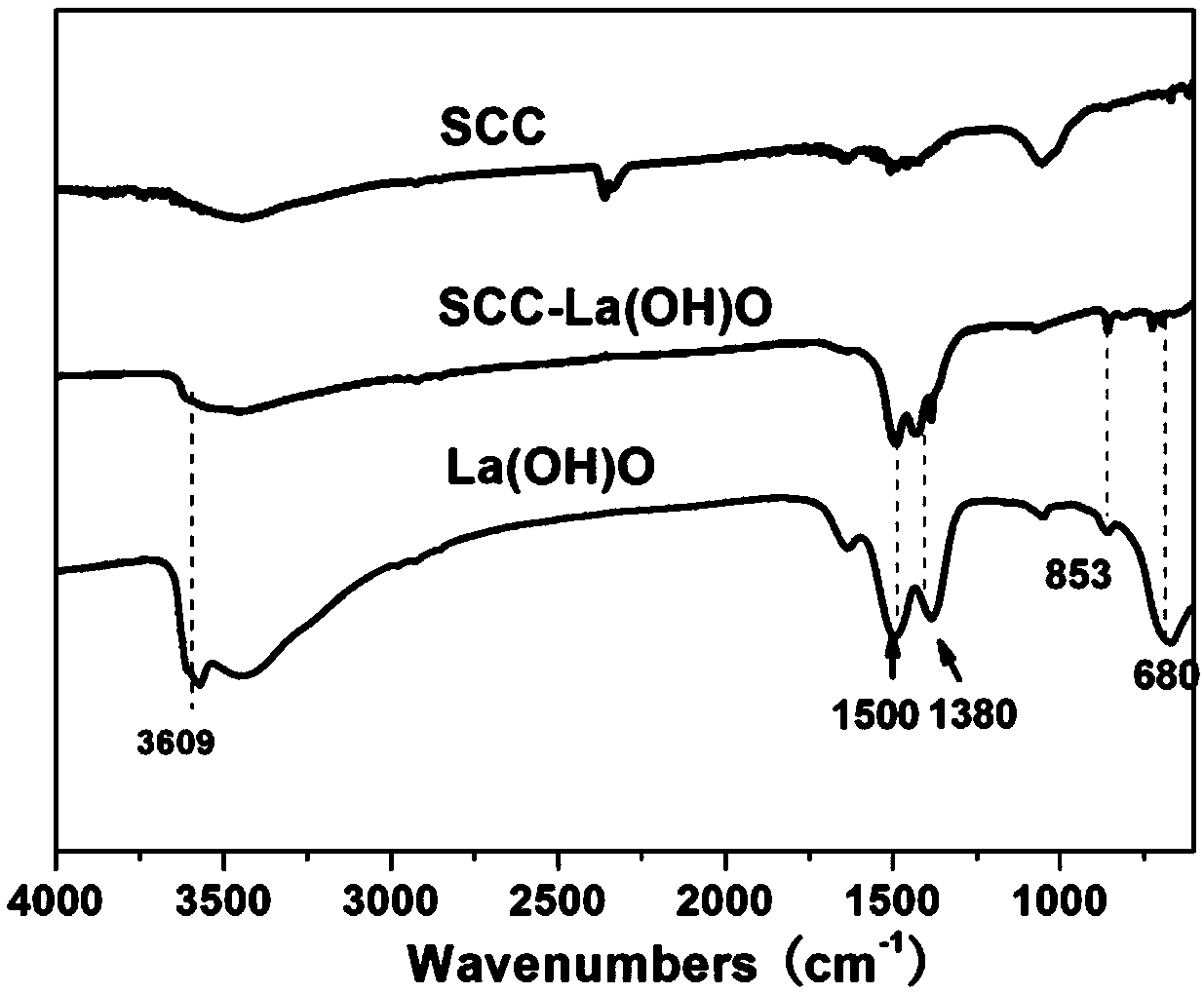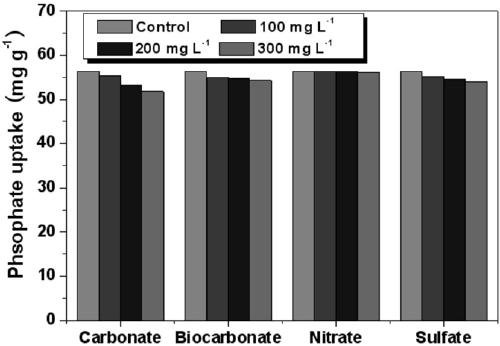Preparation method of solidago canadensis carbon-based phosphorus removal adsorbent and application
A technology of phosphorus adsorbent and yellow flower charcoal, which is applied in the field of water treatment, can solve the problems of low utilization rate of effective active adsorption sites of lanthanum hydroxide, low adsorption capacity, poor acid and alkali resistance, etc., and achieve high specific selectivity and Anti-interference ability, simple process and low cost
- Summary
- Abstract
- Description
- Claims
- Application Information
AI Technical Summary
Problems solved by technology
Method used
Image
Examples
Embodiment 1
[0038] The preparation method of S. canadensis charcoal-based phosphorus removal adsorbent, the steps are as follows:
[0039] Step 1. After drying Solidago canadensis naturally, remove its branches and leaves and keep the stems, use a pulverizer to crush to 100-150 mesh, then raise the temperature to 700°C at 10°C / min in a nitrogen atmosphere, and carbonize for 2 hours. Naturally cool down to room temperature to obtain the Canadian solidago charcoal, which is denoted as SCC.
[0040] Step 2. Add 3.0 g of the canadensis charcoal obtained in step 1 to a mixed solution of 200 mL of absolute ethanol and distilled water (v / v=1:5), add 5.57 g of lanthanum chloride heptahydrate, and mix evenly by ultrasonication. Take 20wt.% sodium hydroxide solution to adjust the pH to 10.0-11.0, first react at 60°C for 2 hours, and then continue to react at room temperature for 24 hours. After the reaction product is cooled, it is fully washed and vacuum-dried to obtain nano-lanthanum hydroxide mo...
Embodiment 2
[0042] The SCC-La(OH)O charcoal SCC-La(OH)O modified by nano-lanthanum hydroxide synthesized in Example 1 was used as an adsorbent to adsorb and treat phosphorus-containing water. The specific adsorption process is as follows: Static adsorption is carried out in a 40mL EPA bottle with a polytetrafluoroethylene gasket. The mass ratio of the adsorbent to the phosphate-containing water can be selected from a range of 1:800 to 2000. The ratio selected in this embodiment It is 1:800, pH=6.0±0.2, the initial concentration of phosphorus is 120.70mg P / L, the water body does not contain NaCl, the adsorption temperature is 25°C, and the adsorption time is 36h. After adsorption equilibrium, it was filtered through a 45 μL aqueous filter head, and the concentration of phosphorus in the filtrate was measured at 700 nm by molybdenum blue colorimetry. The measured adsorption capacity (calculated as phosphorus) is 56.40 mg P / g, and the adsorption capacity after normalizing the actual lanthanu...
Embodiment 4
[0047] The adsorption conditions were the same as in Example 2, wherein the initial phosphorus concentration was 2.08 mg P / L, and the phosphorus content in the solution had dropped to 14 μg P / L after 1 minute of adsorption.
[0048]It can be seen that for the treatment of low-concentration phosphorus components, the adsorbent can achieve ultra-fast discharge standards (50 μg P / L) of the US Environmental Protection Agency (USEPA) and the first grade in my country's "Integrated Wastewater Discharge Standard" (GB8978-1996). Emission standard (0.5mg P / L).
PUM
 Login to View More
Login to View More Abstract
Description
Claims
Application Information
 Login to View More
Login to View More - R&D
- Intellectual Property
- Life Sciences
- Materials
- Tech Scout
- Unparalleled Data Quality
- Higher Quality Content
- 60% Fewer Hallucinations
Browse by: Latest US Patents, China's latest patents, Technical Efficacy Thesaurus, Application Domain, Technology Topic, Popular Technical Reports.
© 2025 PatSnap. All rights reserved.Legal|Privacy policy|Modern Slavery Act Transparency Statement|Sitemap|About US| Contact US: help@patsnap.com



